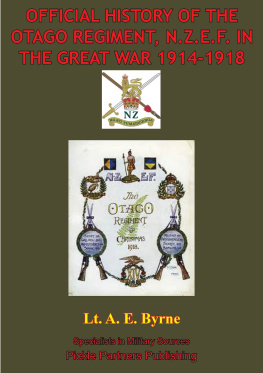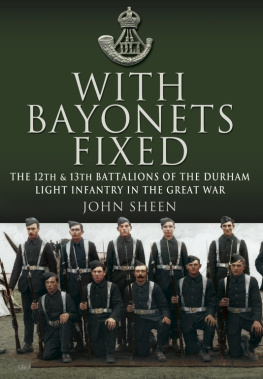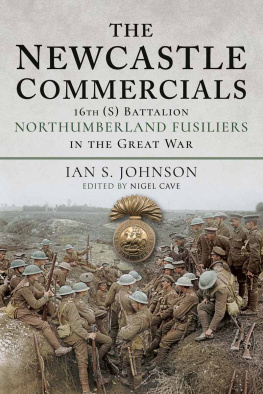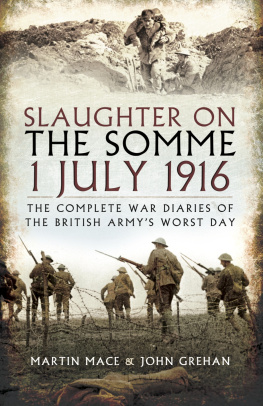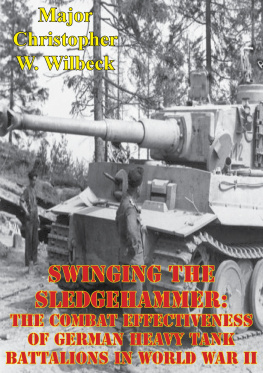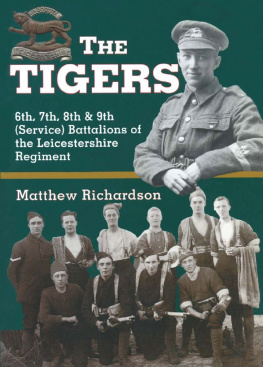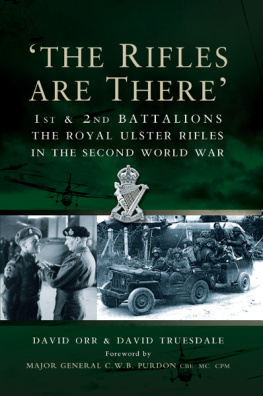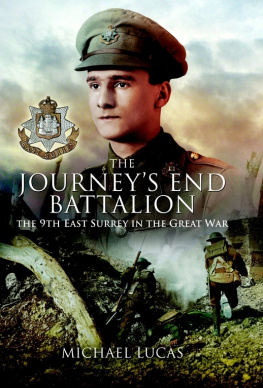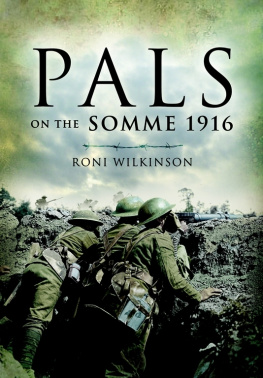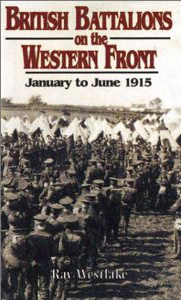Leeds Rifles
Marfaux, Chaumuzy, Montagne de Bligny. All these famous names will be written in letters of gold in the annals of your Regiments.
Berthelot
To the city and people of Leeds, the best town in all the world. To all the Leeds Rifles family and for Rifleman 306153 William Kirk.
Leeds Rifles
The Prince of Waless Own
(West Yorshire Regiment)
7th and 8th Territorial Battalions
19141918
Written in Letters of Gold
Andrew Kirk
First published in Great Britain in 2017 by
PEN & SWORD MILITARY
an imprint of
Pen and Sword Books Ltd
47 Church Street
Barnsley
South Yorkshire S70 2AS
Copyright Andrew Kirk, 2017
ISBN 978 1 52671 148 9
eISBN 978 1 52671 152 6
Mobi ISBN 978 1 52671 149 6
The right of Andrew Kirk to be identified as the author of this work has been asserted by him in accordance with the Copyright, designs and Patents Act 1988.
A CIP record for this book is available from the British Library
All rights reserved. no part of this book may be reproduced or transmitted in any form or by any means, electronic or mechanical including photocopying, recording or by any information storage and retrieval system, without permission from the Publisher in writing.
Pen & Sword Books Ltd incorporates the imprints of
Pen & Sword Archaeology, Atlas, Aviation, Battleground, discovery, Family History, History, Maritime, Military, naval, Politics, Railways, Select, Social History, Transport, True Crime, Claymore Press, Frontline Books, Leo Cooper, Praetorian Press, Remember When, Seaforth Publishing and Wharncliffe.
For a complete list of Pen and Sword titles please contact
Pen and Sword Books Limited
47 Church Street, Barnsley, South Yorkshire, S70 2AS, England
Email:
Website: www.penandsword.co.uk
Introduction
Looking back at 1914 at the start of a century full of slaughter, cruelty and barbarism unparalleled in human history from our safe seat here in the next one, it may seem impossible to connect with the motivations and impulsions of the Riflemen who stood in the mud and filth of the Great War trenches.
Leeds itself has changed radically. The traditional industries of textiles and clothing, so well known and seemingly permanent in 1914, have gone, much mechanical engineering and metal bashing was swept away by the recession of the early eighties and the city turned into a centre for service industries, insurance and banking. This ushered in an era of conspicuous consumption where shopping, previously a means to an end, became an end in itself and changed the face of the town for ever. Through this shadowed gauze it is difficult to see the Leeds Riflemen who joined the colours so willingly in 1914.
Though difficult, it is still possible to walk in their footsteps as you move around the town; it is still possible to see some of the sights they saw, these Leeds lads, these enfants de Yorkshire, and it is possible to see them still in the faces of the people of Leeds walking down Briggate or Commercial Street. Theirs was a world of hard physical work, of uncertain pre-antibiotic health and rigid class structure. It was also a world of faith and of duty towards a people and a country which had succeeded to demonstrable pre-eminence in the world. Its international trade was huge, its commercial interests worldwide and its political influence significant. The British merchant fleet was ubiquitous and its trading interests along the seaways of the world were armed and guarded by the Royal navy. The Colonies and dominions of the empire provided succour, support and wealth. The whole international family of interest was seen as inherently good, worthwhile, beneficial and definitely better than all the rest.
So, when the call came, the Leeds Rifles and their ilk joined the colours willingly and with confidence that Great Britain and its way of life would prevail and the Germans would be beaten. They fought for england, Home and Beauty, at least officially. They fought for the inherent belief that we, in these islands, should determine our own destiny and not have it dictated by foreign despots. They fought for their homes and families against a clearly perceived threat of invasion and, when face to face with the enemy, they fought most of all for their mates from Leeds who were standing next to them. Somewhere in all this may also be a passing nod to dirty old Leeds. Their grit and determination, their mate-ship, optimism and truculent defiance helped win the war and in the years since have helped to make Leeds the great place it is today.
Laurie Milners wonderful 1991 volume on the Leeds Pals does them proud and although Ronald Addymans Regimental Histories of the Leeds Rifles cover the Great War period, the Leeds Rifles, more numerous though less fashionable both then and now than the Pals, deserve the same warm light to be shone on their Great War contribution and to have it described in greater detail. My task in writing this book has been to do as good a job as possible for the Leeds Rifles in grateful thanks for the very good job they did for us.
I have used many sources in assembling this account but special mention must be made of the Leeds University Phd Thesis by Patricia Morris, Leeds & the Amateur Military Tradition (School of History, Leeds University 1983). This is an exceptional work on the subject by someone with a close family connection to the Leeds Rifles, a true daughter of the Regiment and is brimming with detail, insight and love. I recommend it enthusiastically and unreservedly to all those interested in the Leeds Rifles. I have quoted from it extensively and it stands as perhaps the best written assessment of the Leeds Rifles Volunteers there will ever be.
I have used material from the Liddle Collection in the Brotherton Library, Leeds University and the West Yorkshire Archives in Morley to give voice to some of the participants whose records have been lodged since Patricia Morriss excellent 1983 work. The York Army Museum has provided further written sources and photographs of the Leeds Rifles and made many of their artefacts available for photography. Sincere thanks are due to Hannah Rogers for her great kindness and help in this respect.
Via the Liddle Collection staff I have tried to contact all those people who have lodged material with the Collection to obtain permission for its use and received no negative responses before going to print. If you find any errors or inconsistencies they are all mine and I will gladly correct them in future editions. If you recognise any un-named individuals in any of the photographs then please contact me and I would be pleased to set the records straight.
Andrew Kirk
Loughborough
November 2016
CHAPTER 1
Peacetime Volunteers
The Leeds Rifles, as they were to become, were formed as The Leeds Rifle Volunteer Battalion in 1859. The nation had had over three hundred years of Volunteer forces of varying types and efficiency. Although venerable bodies like the Honourable Artillery Company date back to the 1580s, the nations chief home defence organisation, the Militia, dates in a semicontinuous thread from the 1757 Militia Act. Regiments of volunteers were established on a county basis controlled by the lord lieutenant through his deputies and magistrates and local parish officials. It was recognised right away that there would not be enough volunteers to fulfil requirements and so a ballot would be organised when required; effectively a form of conscription. If your name was drawn from the list then you had to serve unless you could find a substitute or, later, were on a list of what became known in the twentieth century as, reserved occupations.


